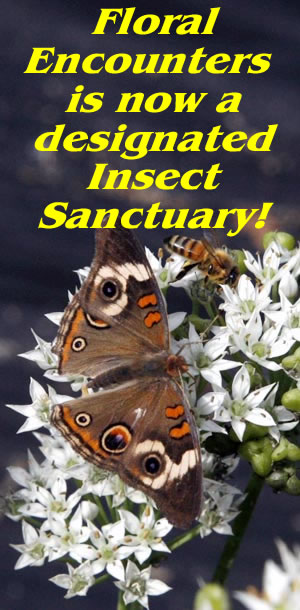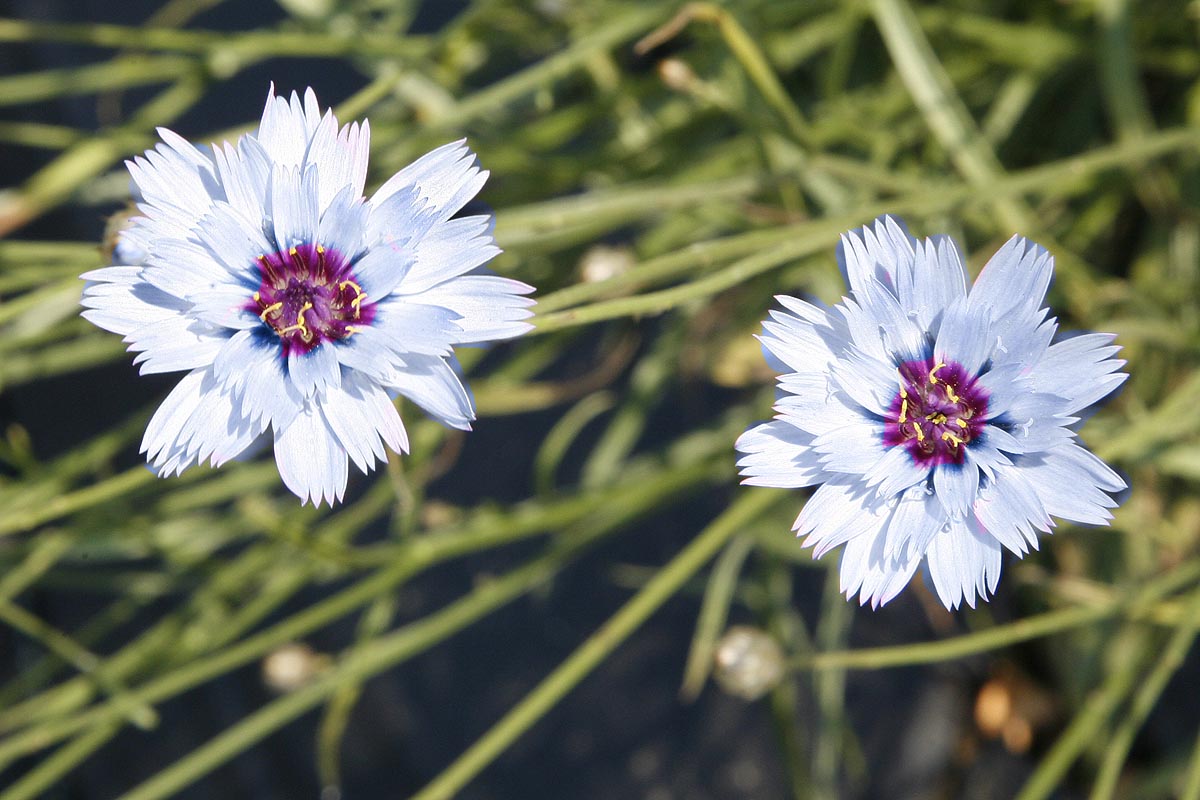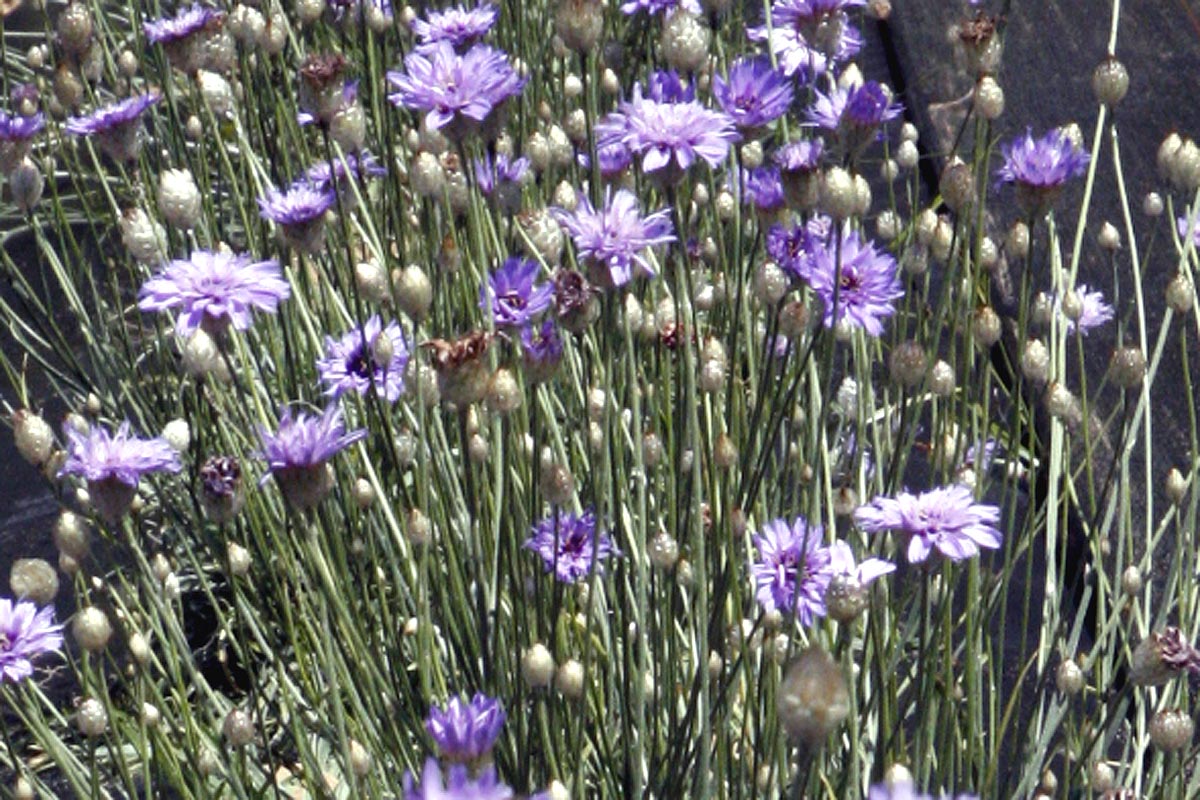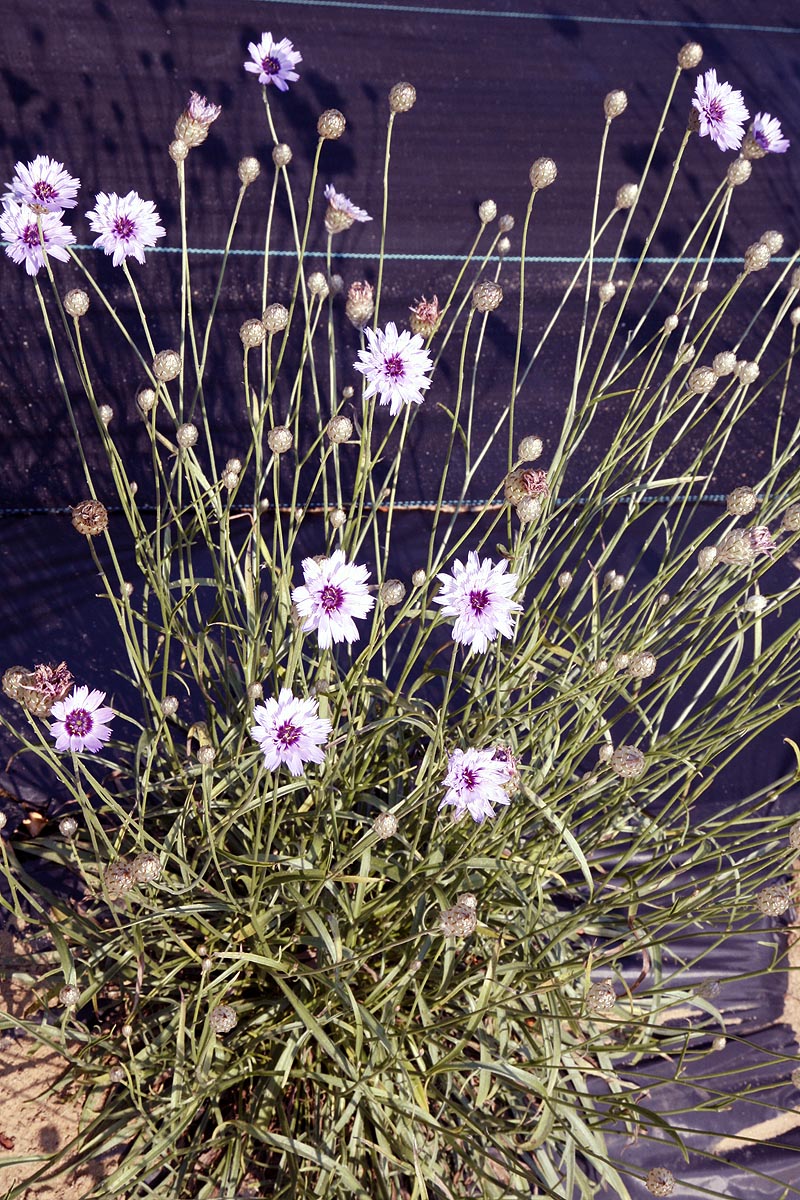Multitudes of bright blue daisy-like flowers about 2 inches (5cm) across on long stiff stems up to 24 inches (61cm) tall from mid summer until fall. Cupids dart is a prolific bloomer and the flowers make excellent cut flowers as they last a long time. Rising from compact clumps of gray green grass like leaves the short lived perennial is tough hardy to zone 4 it is best in very well drained soil and likes sandy or gravel best. Actually does best on poor soils with few nutrients rather than rich ones. It grows a long tap root so does not like to be moved once established but this same root makes it very drought tolerant so its excellent for high desert gardens and areas with less rainfall. Ideal rockery or stone container plant does not do as well in areas of high rainfall and humidity especially if there is no sandy soil. A full sun plant.
Its an ideal plant for casual gardens who want flowers but little work. The flowers are followed by oval silvery seed pods that shimmer in the light and make excellent additions to flower displays. Flowers first year from seed provided they are started early. Blooms are fewer in the first year but second year produces prolific amounts.
Leave some seeds to create new plants as this is a short lived perennial lasting from 4-10 years depending on just how much it likes its location. Flowers attract butterflies but wildlife does not eat it.
Plants are short lived perennials lasting from 3-10 years depending on location. If very favorable soil, water and light they can last longer in poor conditions they may act like annuals. Hardy from zones 4-8.
When seedlings are large enough to handle transplant to individual pots and grow on until plants are large enough to move the garden. Ensure seedlings are well hardened off and can tolerate full sun before transplanting out.
Be sure when choosing the final location of cupids dart as it produces a long tap root and does not take well to transplanting. In a large amount of cases the plants die if dug up and moved.
Soil type. Needs a well draining soil, cannot tolerate wet soils even those that flood occasionally, does best on sandy soils. Poor soils are actually better for this plant and it thrives there far more than soils with good nutrients so is excellent for the neglective gardener. Cupids Dart originates in the Mediterranean so is used to a hot dry climate , but its also hardy to zone 4. It will do well in high desert areas and locations with some rainfall.
Water. Water regularly keeping ground just slightly moist for the first year while the plant grows its tap root. After that not much water is needed and its very drought tolerant once established due to that long tap root. This makes it ideal for semi desert areas especially high deserts where it is not totally devoid of rainfall. Does best with a small amount of water at least once a week, Excellent in areas with reasonable rainfall provided soil is very well draining. In more humid areas ensure that there is plenty of airflow around the plants. May not do well in south eastern states where rainfall and humidity tend to be high.
Light and Temperature. Full sun for most of its range especially important in more northern zones once at zone 7 and warmer it can take a little shade during part of the day. Plants in more shade will become smaller and may not flower. Very heat tolerant provided the air is not too moist and humid.
Reseeding. Cupids Dart is a short lived perennial how long it lives will depend a lot of its location. In ideal conditions on sandy soil and not that much water it can live as long as 10 years. In other areas it might only live 2. The average is about 3-5 years so if you want to keep those blue flowers coming then allow the plant to reseed a little and keep a steady stream of new plants coming so when the older ones die there are others to take over.
As a container plant. Cupids Dart works very well as a container plant or on a rockery. The ideal container is one of those rock ones that simulates a rockery just ensure the container is fairly deep to accommodate the tap root and masses of blue flowers will be yours for several years at least. Use a well draining mix with lots of sand and/or small stones to simulate a rock like garden. Pairs well with other rock garden plants like creeping phlox and provides excellent flowers when other rock garden plants have finished flowering. Grown in these conditions a big long soak of water infrequently works much better than regular small waterings. Soak well the allow the soil to almost dry out for a while before repeating.
The Greeks and Romans used this plant to concoct love potions although the exact recipe is now lost but is the reason this plant got its name.









